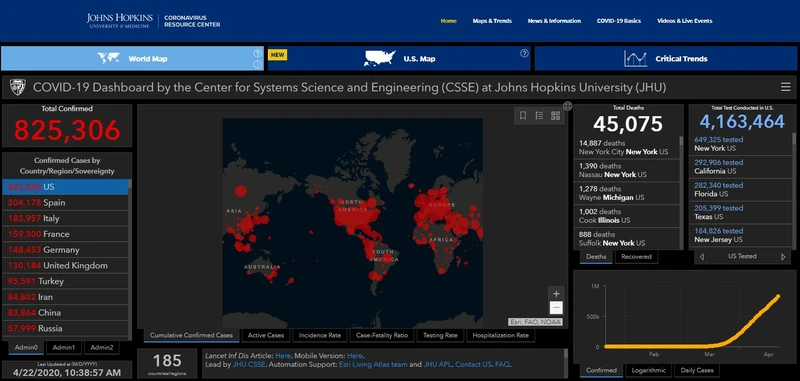COVID-19: A catalyst for eHealth?
Blog by Silvia Berenice Fischer*)
While three billion people around the world are in lockdown, rates of infection and mortality continue to rise, the SARS-CoV-2 pandemic is presenting unexpected and unprecedent challenges that need to be tackled in a matter of hours, days, and weeks. Whilst healthcare systems collapse, digital health tools rise to contain the pandemic and build resilience beyond the outbreak.
eHealth solutions
In recent years, the use of information and communication technologies (ICT) in health care has increased. E.g. national health authorities around the world have started to focus on the use of standardized national electronic health records (EHRs), electronic health cards and health internet portals. In the face of the SARS-CoV-2 pandemic, the surge of digital health solutions is more relevant than ever.
Digital processes on health can support optimized patient care, from remote consulting to the use of robots to deliver medical supplies, these are examples of transformative solutions in times where social distancing is imperative. Virtual medical consulting offers the opportunity to reduce the burden on hospitals, they also can improve the accessibility to health care in underserved areas. Online appointments represent an optimal solution to reduce waiting times and improve the time and space management in medical offices. In addition, they can limit unnecessary exposure of patients. E-prescribing avoids patients from picking-up prescriptions either at a medical practice or at the pharmacy. Automated messaging service about test results is a measure that has been put in place in countries such as Luxemburg, thus reducing the time of reporting and speeding the control measures.
In November 2019, the German Federal Ministry of Health released an act to improve health care through digital solutions. This act envisaged apps on prescription, easy use of online video consultations and access to a secure healthcare data network for treatment everywhere, processes that have now been accelerated due to the outbreak.
A prompt public health intervention relies on an efficient surveillance system that can anticipate an outbreak. Routine and big data for early warning are essential to produce epidemics forecasts. In this sense digital epidemiology was also accelerated by the COVID-19 outbreak. On March 2020, the world's largest health management information system (DHIS2) launched a COVID-19 surveillance package to accelerate case detection, situation reporting, active surveillance and response, following WHO´s technical guidelines on surveillance. This digital package is operating already in eleven countries and is work in progress in another 23, mostly located in the global south.
Health information and communication
During this outbreak the speed of communication has reached unprecedent levels, the digital channels being the most relevant.
The Canadian start-up BluDot, dedicated to developing software for global early warning systems for infectious diseases, spotted the outbreak in Hubei region at an early stage.They tracked and predicted accurately the spread of the disease via artificial intelligence, machine learning and big data.
Real time maps and data visualization on the spread of the disease have become a staple when it comes to retrieving and communicating information on the pandemic. In April 2020, Apple released a tool with mobility trend reports to support the understanding on how people are moving during the pandemic. Social media trackers on social mobility have been providing data to scientists and decision makers to understand behaviors and set contention measures among the world.

In January 2020, John Hopkins University developed a COVID-19 Global Tracking Map, which includes the number of confirmed cases, deaths and recoveries. Just two months later, an expanded version of this map was launched for the US, also including the density of the outbreak per county, the type of stay-at-home policy, state-level testing data, county-level race and ethnicity data, poverty and health insurance rates, powering data-informed decisions for the public health sector. Another example of how fast digital transformations are occurring during the pandemic. The driving and traffic app Waze added new features, including quarantine-related road closures, map pins for medical testing centers, and emergency food distribution center locations.
Self-reporting apps have become an essential tool to monitor the development of the disease, examples around the world include the UK-developed COVID Symptom Tracker. This app tracks symptoms, location and hospital treatments of users. Just in the greater area of London city, more than 70,000 people have used this app. A similar app was developed by Freiburg University in Germany, where users document their state of health on a daily basis, providing important data for a better understanding of the spread and the disease, showing how important the role of citizen-science is.
Final thoughts
Digital solutions were seen beyond the national health systems and governments, when an Estonian hackathon (organized in less than six hours) managed to put together 1,000 participants from civil society and government, offering solutions to the COVID-19 challenges. Following the Estonian example, the WIRVSVIRUS hackathon (the biggest hackathon in Germany to date) in collaboration with the Federal Government brought together more than 42,000 participants. Within 48 hours the teams tackled solutions, ranging from social distancing to self-isolation and medical solutions. One of the winning projects included a digital waiting room, which, according to a risk evaluation, will provide a medical appointment if the user is set to be a priority and the capacities of the medical services are available.
Further action to close the digital gap on pandemic unpreparedness is urgently needed, actions should be oriented to ensure the universal access to high-quality telecommunications, efforts towards the standardization and sharing of data across the world and to strengthen the digital partnerships between government, research, health science companies and ICT companies. Investment to accelerate the digital transformation of health care systems is crucial.
Uncertainties on how to ensure legal, privacy and ethic security remain, and the fully dynamic issue of digitization in the era of a pandemic will certainly continue to grow beyond the 2020 outbreak.

*) The author is a junior researcher of the One Health Graduate School at ZEF. See: https://www.zef.de/onehealth.html
Further information
https://coronavirus.jhu.edu/map.html
https://wirvsvirushackathon.org/?lang=en
https://www.dhis2.org/covid-19
Photo 1: COVID-19 Global Tracking Map – John Hopkins University
https://coronavirus.jhu.edu/map.html
Photo 2: Corona Data donation app – Robert Koch-Institut
https://www.rki.de/DE/Content/Service/Presse/Pressefotos/Corona-Datenspende.html


